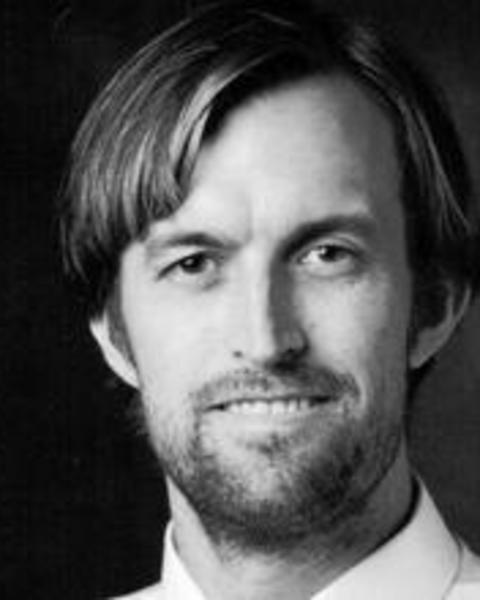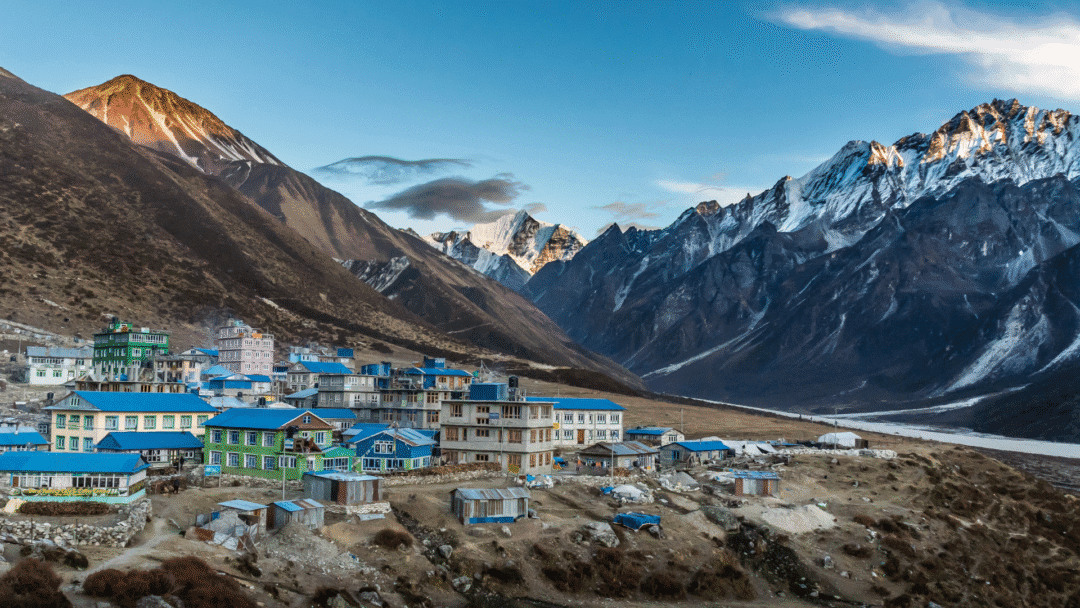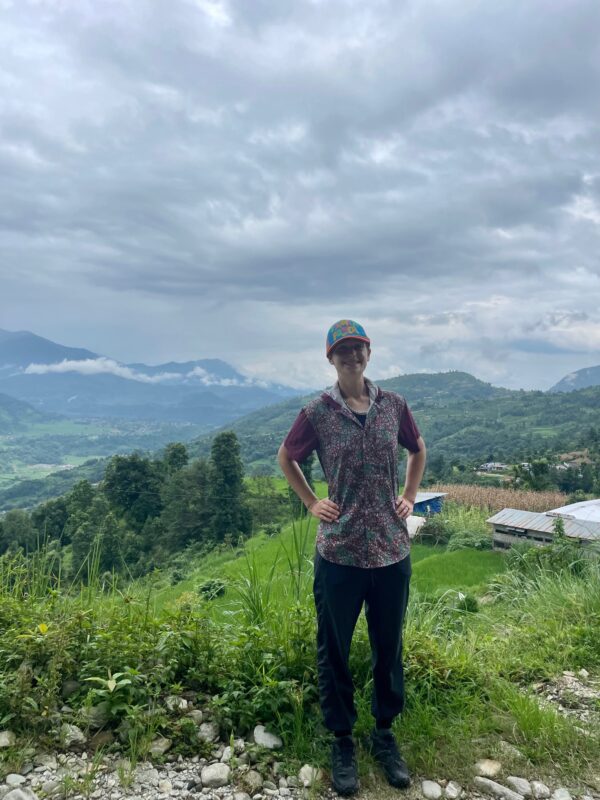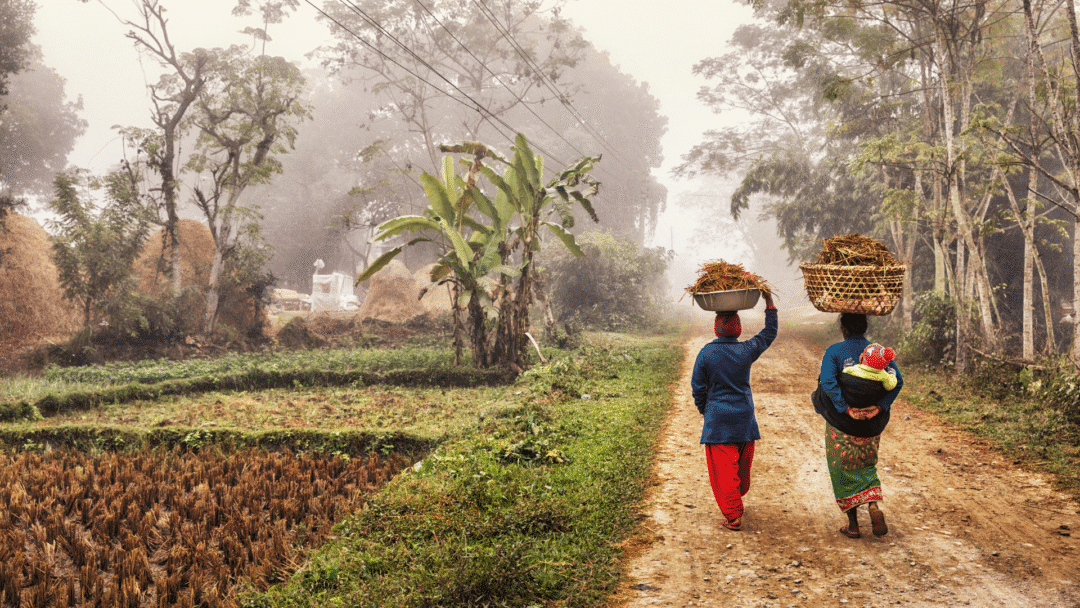Nepal is acutely vulnerable to the impacts of climate change, grappling with rising temperatures and an increasing frequency of extreme weather events such as floods, droughts, and landslides. These environmental stresses pose significant threats not only to infrastructure and livelihoods, but also to cultural heritage, biodiversity, and long-term habitability. To better understand the human dimensions of this crisis, Professor Eugene Richardson, M.D., Ph.D., Assistant Professor of Global Health and Social Medicine at Harvard Medical School and Assistant Professor of Medicine at Brigham and Women’s Hospital, is leading a research project that examines how local communities in Nepal perceive climate risks. His project, “Climate Change, Loss and Damage, and Habitability in Nepal,” is one of the inaugural recipients of the Mittal Institute’s new Faculty Climate Grant program. He will share his findings in a November 5 event, “Climate Change, Loss and Damage, and Habitability,” moderated by Maxine Burkett, Professor of Environmental Social Sciences, Stanford University.
We spoke with Prof. Richardson about his climate grant, what he hopes to glean from his research, and what attendees can expect at his upcoming talk.

Prof. Eugene Richardson
Mittal Institute: Prof. Richardson, what motivated you to focus on climate change vulnerability in Nepal?
Eugene Richardson: Nepal is a place where mountains, rivers, and cities are stacked into some of the most dramatic terrain on earth—and thus climate change is felt here early and intensely. People are already living with flash floods, landslides, and even glacial lake outburst floods. Talking with Prof. Madhusudan Subedi and colleagues in Kathmandu, we became interested in how Nepali communities make sense of the changes in their environment and the source of their vulnerability. When the effects of climate change cause suffering, how do people explain it? Do they point to global over-emitters, local land use, weakened public services, or long histories of impoverishment through neoliberalism and neocolonialism? These explanations matter, because they guide what people think is fair and what they’ll demand in a Loss and Damage (L&D) context. (Losses and damages refer to the negative effects of climate change that occur despite mitigation and adaptation efforts.)

The mountain village of Langtang, Nepal | Adobe.
Mittal Institute: Your project will conduct semi-structured interviews with diverse stakeholders to enhance our understanding of how climate-induced human mobility and displacement intersect with local expectations of environmental justice. Why are ethnographic methods critical to understanding climate displacement and habitability?
Eugene Richardson: Climate discourse sometimes flattens many causes of vulnerability into one bucket—“climate change did this.” Ethnography helps un-flatten the picture. Yes, there’s a warming climate—but harms are also shaped by where people can afford to live, how land is regulated, the strength of public services, caste and class hierarchies, and upstream forces like Global North emissions and Nepal’s historical entanglements with British imperial policy. When we listen for that full causal chain, we can match remedies to people’s own sense of what went wrong—and why.
Climate discourse sometimes flattens many causes of vulnerability into one bucket—“climate change did this.” Ethnography helps un-flatten the picture.
We also study what we call “story technologies.” These are the tools and narratives—indicators, maps, funding logics, buzzwords—that international agendas bring into Nepal. They can unlock resources, but they also steer how problems are cognized or apprehended. If the imported story centers on environmental forces alone, it can obscure explanations tied to land, labor, or governance while also blurring accountability for high-emitting countries. The result is that it narrows the kinds of L&D claims seen as legitimate.

Zazie Huml, a member of Prof. Richardson’s lab, will head to Nepal in December to begin conducting the interviews.
Mittal Institute: Can you explain how this multi-stakeholder ethnographic research will work in practice?
Eugene Richardson: We’ll conduct semi-structured interviews with a wide range of people—households in flood-affected areas, municipal officials, health workers, farmers, civil society groups, and aid implementers. We’ll start with snowball sampling to recruit diverse individuals within communities, and we’ll keep interviewing until we reach thematic saturation. Questions will focus on how people understand risk and responsibility, where they draw the line on if a place remains habitable, and what kinds of Loss & Damage remedies they see as fair.
Zazie Huml, a member of our lab, will be heading to Nepal in December where they’re going to meet up with Prof. Madhusudan Subedi and colleagues at the Planetary Health Research Centre (PHRC) of Nepal and will work with them to conduct the interviews.
Mittal Institute: Your project addresses current limitations in Loss and Damage (L&D) mechanisms by examining both economic and non-economic losses resulting from climate change. How might non-economic losses—like damage to cultural heritage or biodiversity—impact communities, and why are they often overlooked?
Eugene Richardson: The loss of place, community ties, rituals, schooling, and a sense of safety are all things that obviously matter in a person’s day to day life. They shape whether families stay, move, and what kind of L&D remedies feel fair. We’ll document these non-economic losses alongside financial harms to give a complete picture of both the stakes and what’s lost. The aim is to make these harms visible in L&D claims and local planning so remedies match both the scope of the harm done and the kinds of things people value.
Mittal Institute: A key component of your program is a collaboration between the Planetary Health Lab at Harvard Medical School and the Planetary Health Research Centre in Nepal. How did you cultivate this partnership, and how has working with them shaped your approach?
Eugene Richardson: Zazie met Prof. Madhusudan Subedi while doing thesis work for their Harvard undergrad degree in Nepal. When the Mittal grant came up, Zazie reached out to him, and he then connected us with the PHRC. After a few conversations, it was clear the fit was good and we were interested in the same kinds of questions, so we wrote the proposal together. We’re grateful to collaborate with PHRC, whose community ties, field experience, and policy relationships ground the work. Zazie will go to Nepal in December to work with Prof. Subedi and PHRC on the interviews and day-to-day coordination.

Rural village, Nepal | Adobe.
Mittal Institute: What has surprised or challenged you most during this research so far?
Eugene Richardson: The denial that climate change exists by the Trump administration, along with the cancelling of all National Institutes of Health (NIH) work related to climate change and health, means it will be more difficult to scale up this type of work.
Mittal Institute: What policy changes do you hope your findings will inform, both in Nepal and internationally?
Eugene Richardson: In Nepal: We will use the data we collect to support and facilitate loss and damage claims and to strengthen the habitability evidence base for vulnerable populations. By publishing findings and working with our external collaborators in Nepal, we aim to inform government and institutional decision-making with clear, locally grounded evidence and amplify partners’ policy priorities.
Internationally: We could potentially develop a Harvard Initiative on Loss and Damage and use the convening power of Harvard and partner institutions to disseminate our results and promote South–South dialogue on mitigation, adaptation, and Loss and Damage. We plan to write scientific and policy papers that will be shared through a network of governmental and institutional stakeholders and will be designed to inform international policy debates and practice with actionable, widely accessible evidence.
☆ The views represented herein are those of the interview subjects and do not necessarily reflect the views of the Mittal Institute, its staff, or its steering committee.
